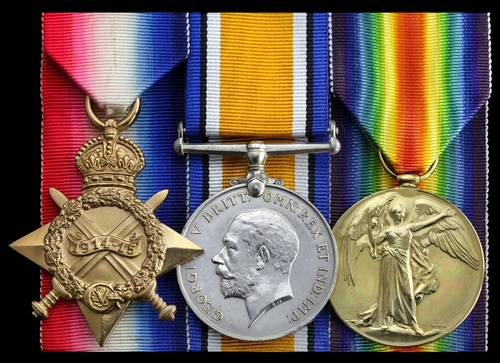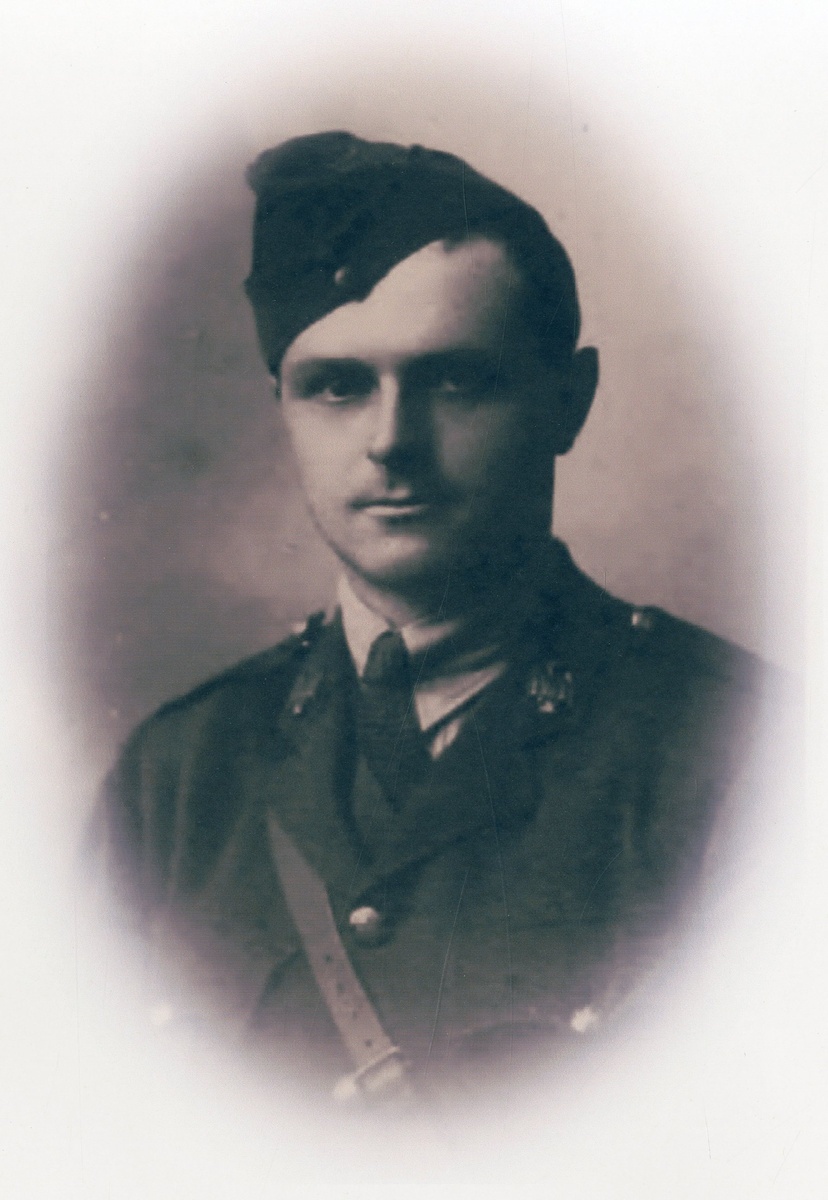Auction: 18001 - Orders, Decorations and Medals
Lot: 6
A good fighter pilot's Great War campaign group of three awarded to Lieutenant R. H. Stacey, Royal Air Force, late King Edward's Horse and Royal Flying Corps
Having claimed a victory in March 1918, piloting a S.E. 5a of No. 41 Squadron, he was himself severely wounded by machine-gun fire in a patrol over Bailleul in May 1918 and suffered the amputation of his lower left leg
1914-15 Star (1115 Pte. R. H. Stacey, K. Edw. H.); British War and Victory Medals (Lieut. R. H. Stacey, R.A.F.), good very fine (3)
Reginald Howard Stacey was born at Houghton, near Arundel, Sussex in October 1892 and was educated at Haileybury College. Enlisting in the Royal Fusiliers in September 1914, he transferred to 2nd King Edward's Horse as a Trooper in the following month and served in the same capacity out in France from May 1915 to January 1916.
He returned to the U.K. in the latter month and was commissioned as a 2nd Lieutenant in the 2/4th Battalion, Royal Sussex Regiment. Having then transferred to the Bedfordshire Yeomanry, he applied to the Royal Flying Corps for pilot training and qualified for his 'Wings' in February 1917 (Aviator's Certificate No. 4405). He subsequently witnessed active service in France in No. 29 and No. 11 Squadrons in the period May to August 1917 but was invalided home to hospital in the latter month.
One down out of control
Returning to duty in the U.K. with No. 85 Squadron that November, he subsequently transferred to No. 41 Squadron, an S.E. 5a unit out in France and flew a number of sorties in early 1918. His most successful outing appears to have been that flown on 24 March, a story taken up by his combat report - a report signed-off by his C.O., Major G. H. 'Beery' Bowman, D.S.O., M.C. & Bar, D.F.C., who himself scored 32 victories:
'Whilst on patrol at 9.00 a.m. at about 10,000 feet, we met 4 Albatross & 4 Triplanes over Vaulx. I dived on one Albatross firing about 150 rounds at close range, E.A. did a steep dive, then stalled, fell over & went down out of control until quite close to the ground. I could not follow him on account of the other E.A. We flew over Vaulx at about 9.30 a.m. & I observed 2 machines just under where our fight had been, crashed to the E. of the village. I think they were 1 Albatross & 1 Triplane.
I saw Captain Fox Russell & Lt. Taylor dive on to a Balloon. I followed but did not realise what they were diving on until I saw the Balloon going down. I observed an E.A. triplane of greyish colour at Bullecourt apparently crashed as it was in a badly shelled area.'
Severe wounds - amputation
In the early evening of 11 May 1918, Stacey was seriously wounded by machine-gun bullets in a combat over Ecquedecques, most probably by German ace Leutnant Kurt Monnington of Jasta 18.
Evacuated home, his left leg was amputated below the knee at the Orthaepedic Hospital, Shepherd's Bush. Despite attempting to re-attest for service with the Bedfordshire Yeomanry, he was invalided out of the Royal Air Force in April 1919, following a special medical board held at Caxton Hall in London.
Stacey emigrated to Southern Rhodesia post-war; sold with comprehensive copied research.
Subject to 20% VAT on Buyer’s Premium. For more information please view Terms and Conditions for Buyers.
Sold for
£700







